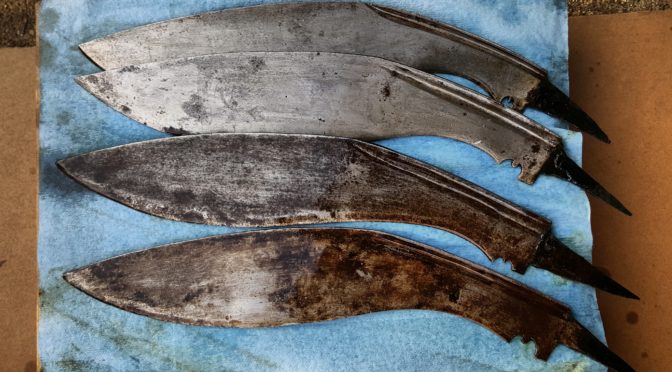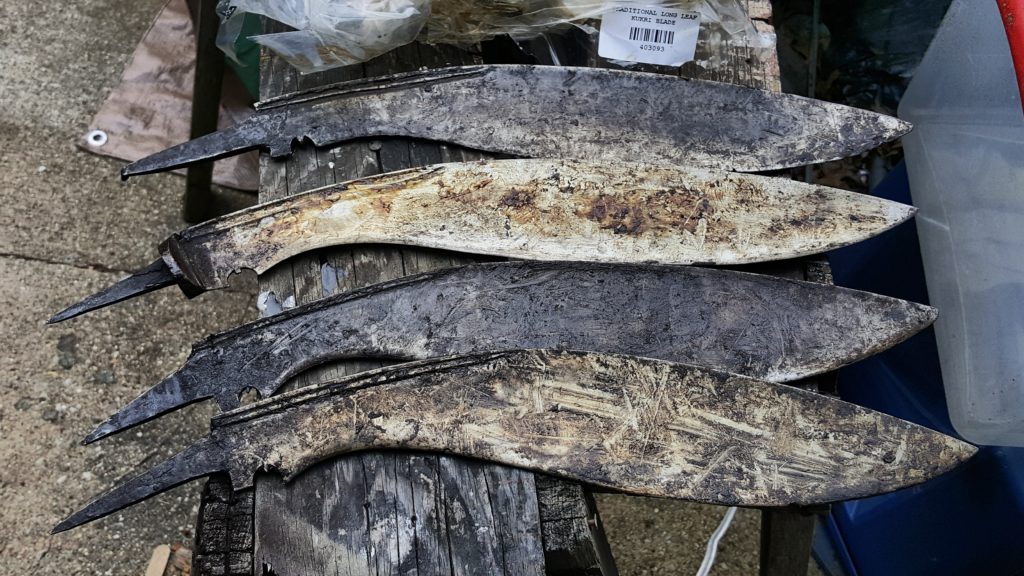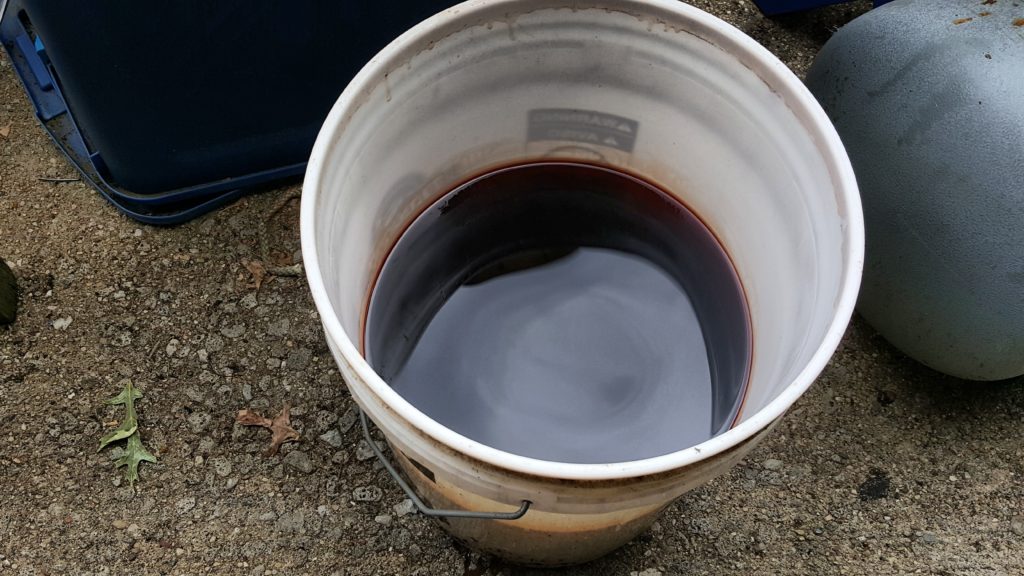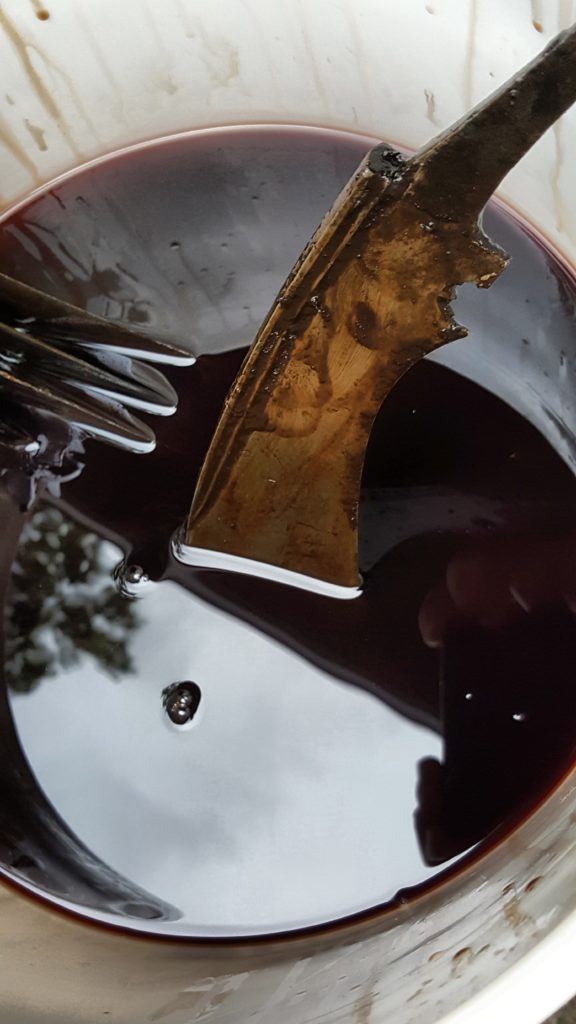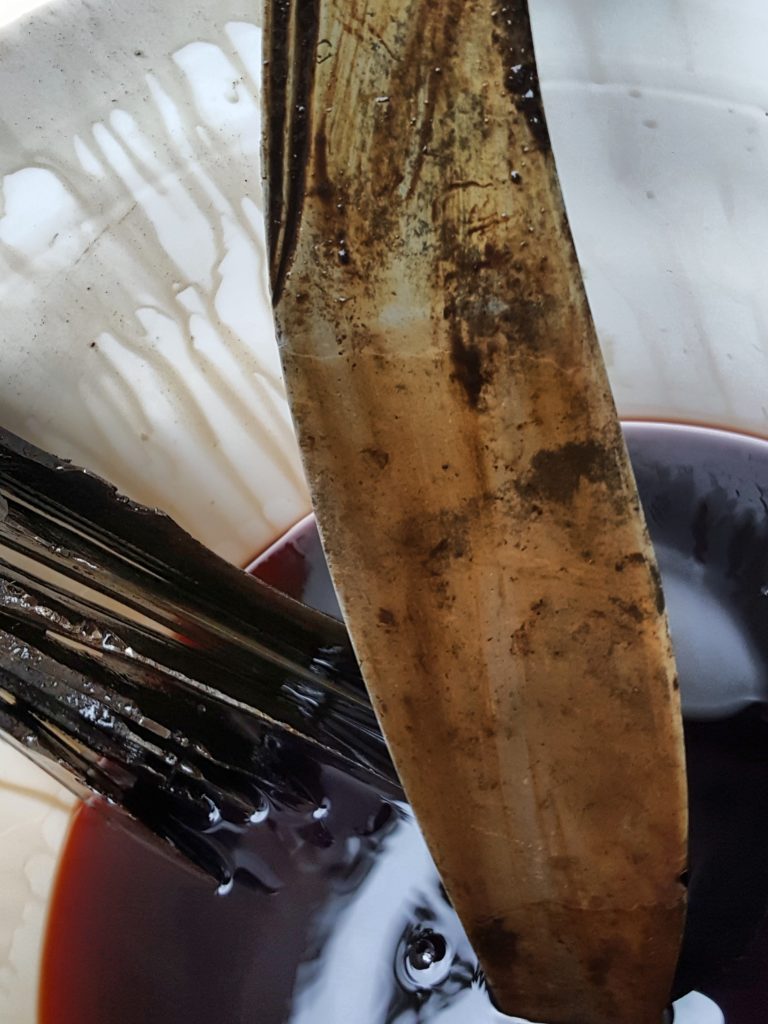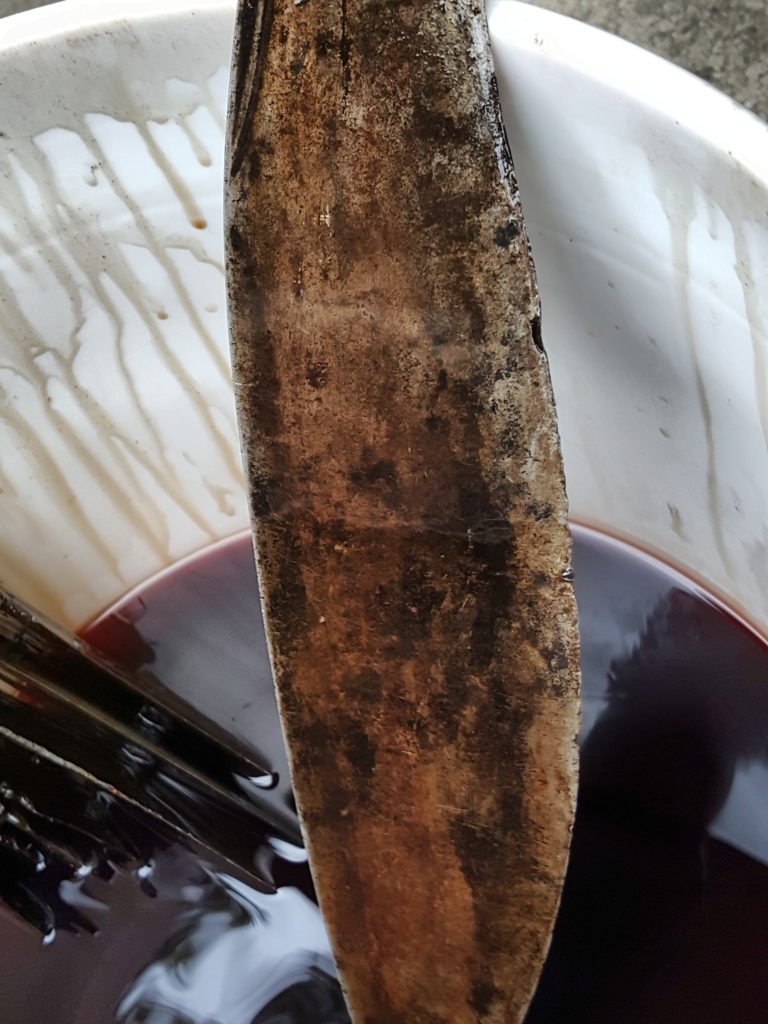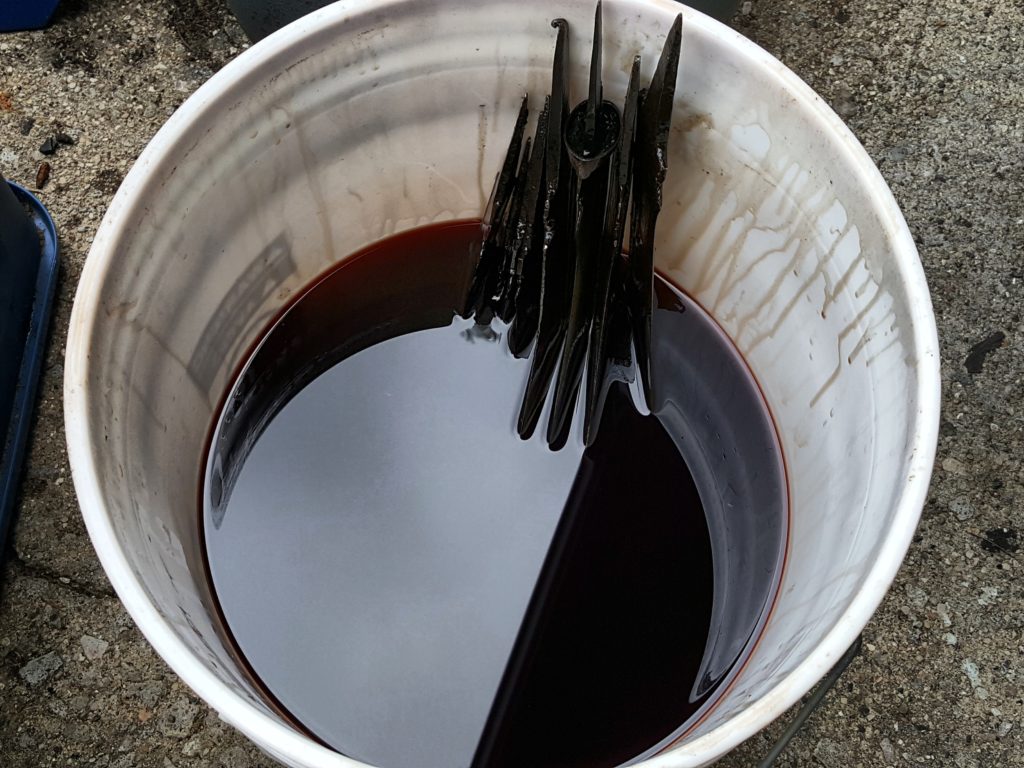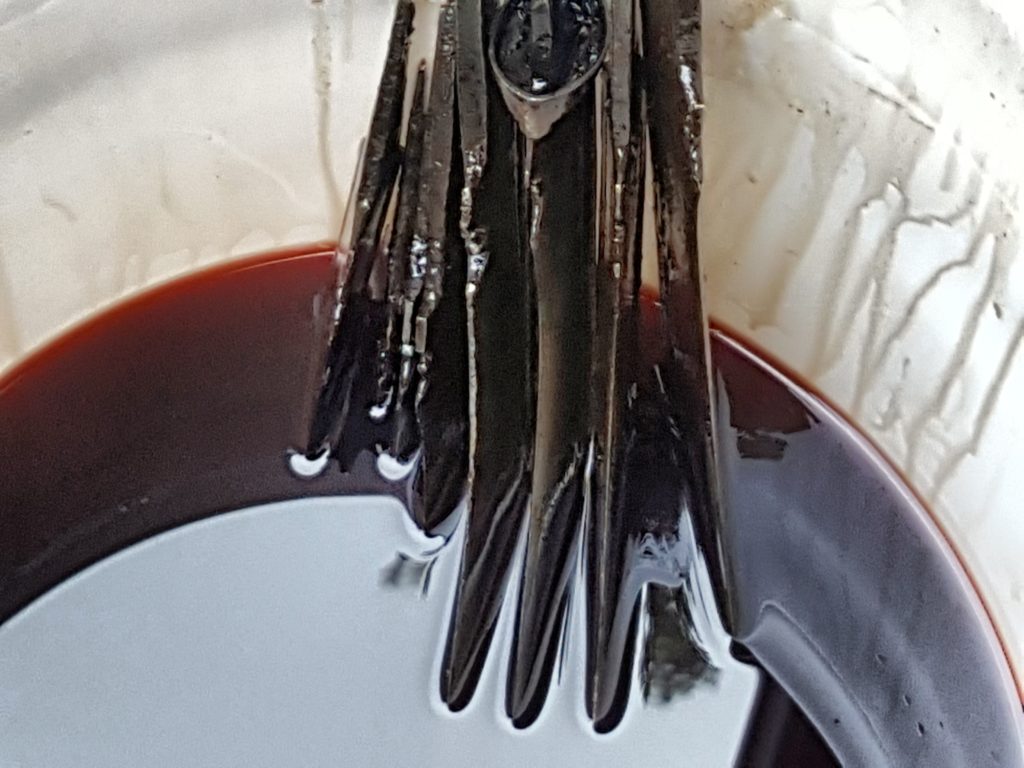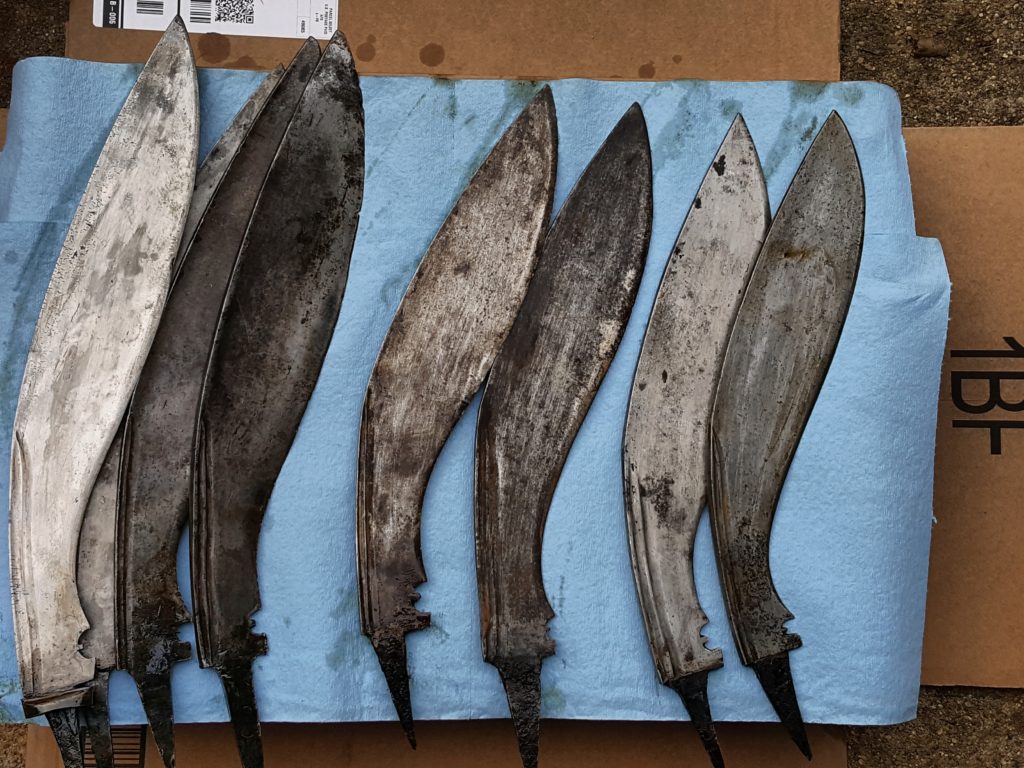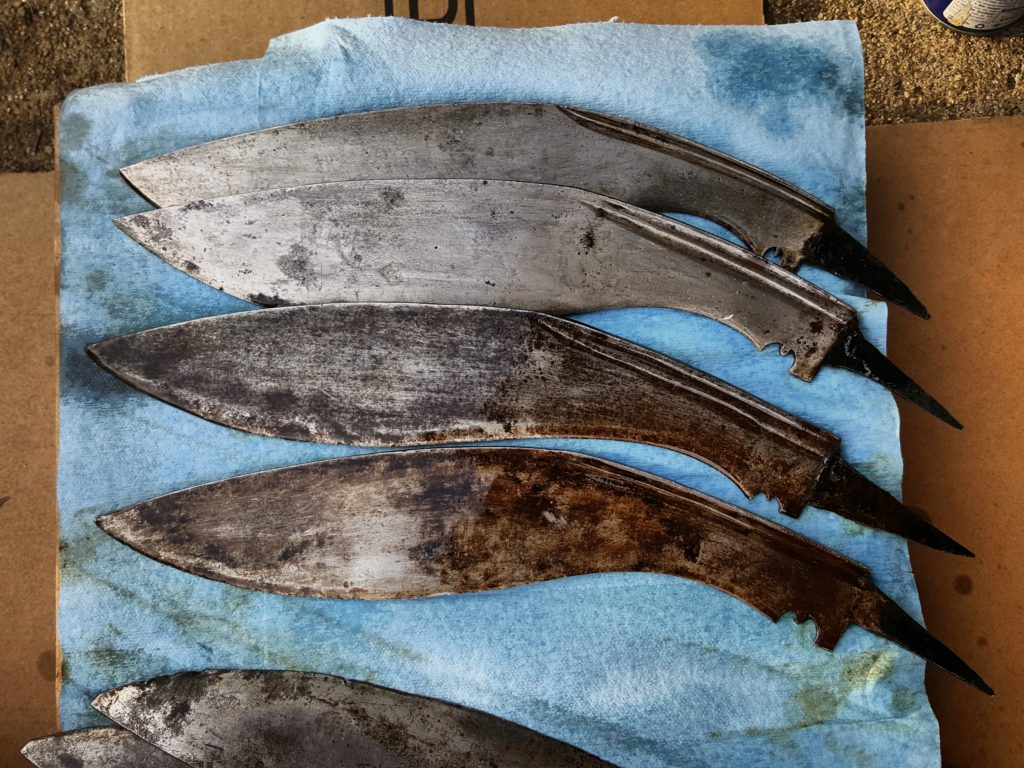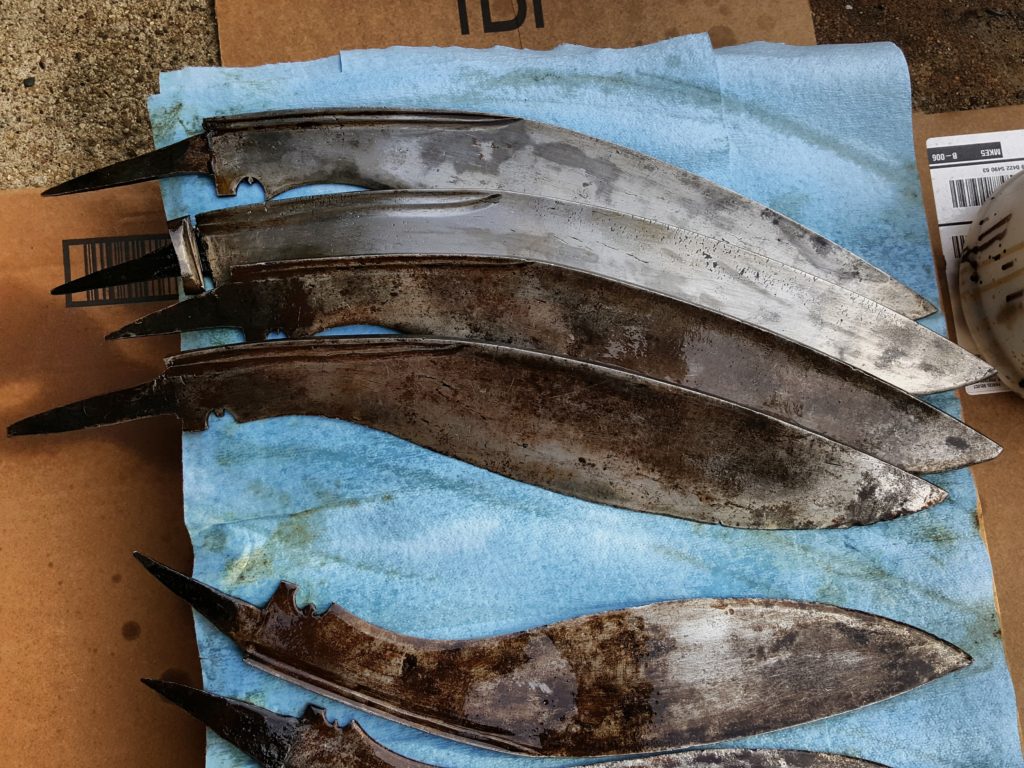We’ve all had parts come in with really dried out preservative on it such as grease or cosmoline. I bought some 100 year old khukuri blades that were coated in dried out grease and realized this was a great time to take some photos. There’s a way to get all this crud off very easily – most will practically wipe off!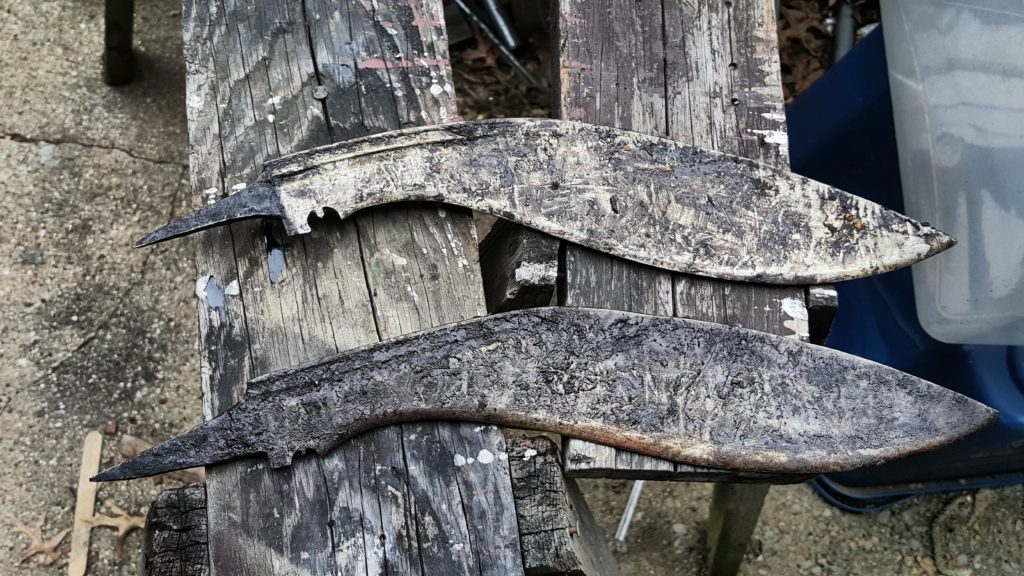
I learned the following trick years ago after a friend was worried I would blow myself up using gas, brake cleaner, etc. In hindsight I must admit it was risky but I rationalized it because I needed to get the parts clean – this is not only effective but also way safer.
Take a 5 gallon pail with a sealable lid on it. In the photos you see a basic Ace Hardware plastic bucket with it’s lid that has a waterproof gasket.
I first learned about this years ago for firearms and it is a cleaner known as Ed’s Red and I’ve used it ever since. The formula was developed and shared by a gentleman named “Ed Harris” and it works great for dissolving grease, cosmoline and even penetrating rusty parts.
The basic formula is:
- 1 part Dexron III or better
- 1 part deodorized kerosene
- 1 part mineral spirits
- 1 part acetone
I use it over and over, which is why I recommended the lid. I’ve been using this bucket for probably 3-5 years now. If it gets really gross or seems to stop working then I will change it but it’s fine so far.
So, I set the blades in the ATF and liberally coated the sides and let it sit. I periodically would reverse the blades so they could be immersed. If they were smaller parts, I’d drop them in there and let them sit for a few days.
What I wold so each time when I turned them was to rub the blades down and try and get the softened/dissolved grease off. A lot of it would wipe right off with no scrubbing.
So here they are a couple of days later simply wiped down. I left a thin film of ATF on them to reduce the odds of rust but all the old dried grease is gone.
When I am done, I put the lid back on and move the pail out of the way. I do keep wet parts out of the cleaner as I don’t want to contaminate it with water but other than that, I’ve soaked all kinds of greasy, oily, rusty, dirty parts in this. The crud settles to the bottom of the pail over time. I’ve learned that if I stir it up there is a lot of debris. If it gets too bad, it will be time for a new batch.
I mentioned it in passing but this is also great for penetrating rusty parts so you can take them apart. I can’t begin to guess what all I have soaked in this bucket over the years but it sure includes gun parts, blades, rusty car parts, etc. It’s a huge time saver and I hope it helps you out as well.
P.S. If you want to read more on Ed’s formula, click here for his original article that is in the public domain.
If you find this post useful, please share the link on Facebook, with your friends, etc. Your support is much appreciated and if you have any feedback, please email me at in**@*********ps.com. Please note that for links to other websites, we are only paid if there is an affiliate program such as Avantlink, Impact, Amazon and eBay and only if you purchase something. If you’d like to directly contribute towards our continued reporting, please visit our funding page.
